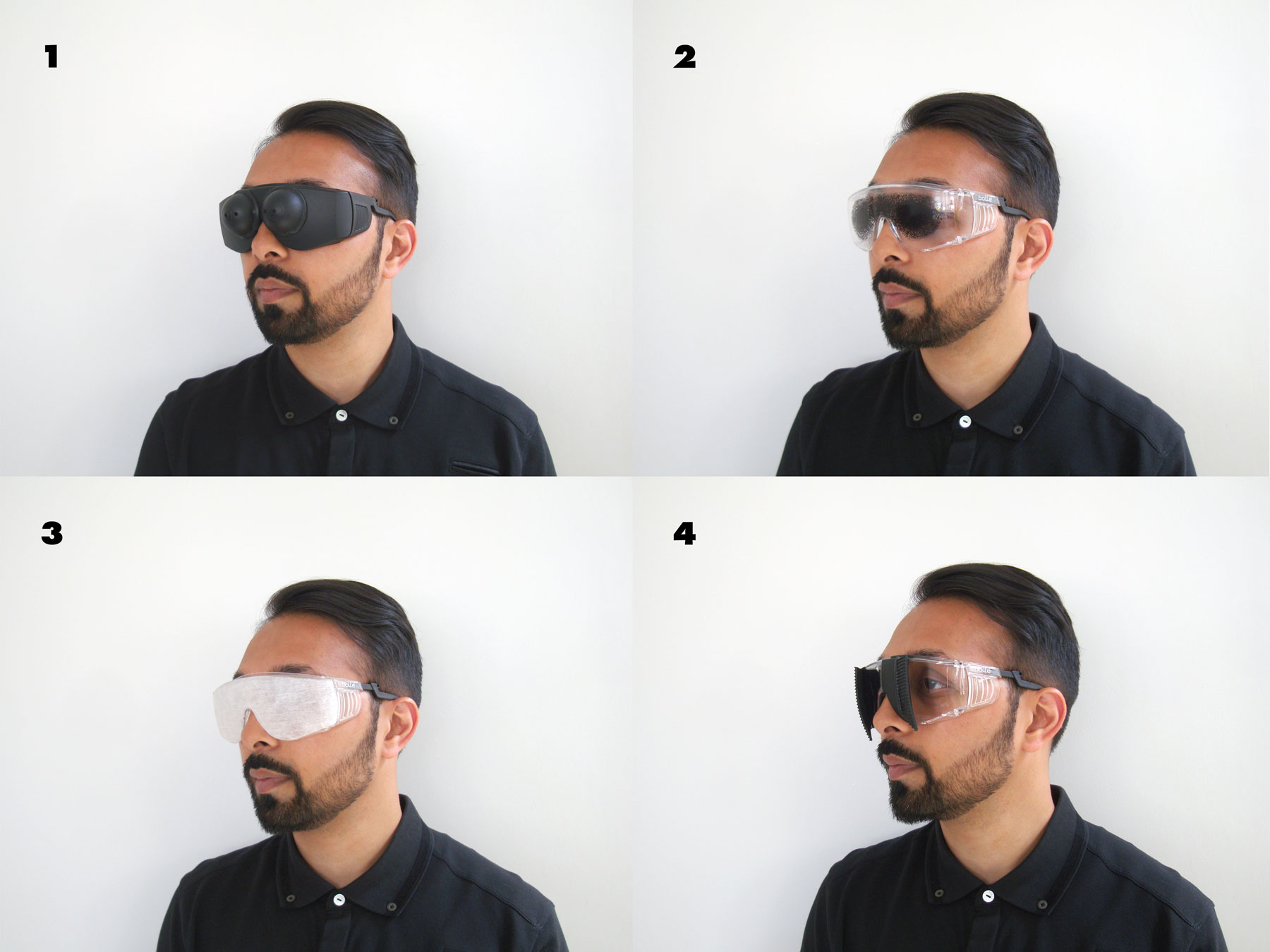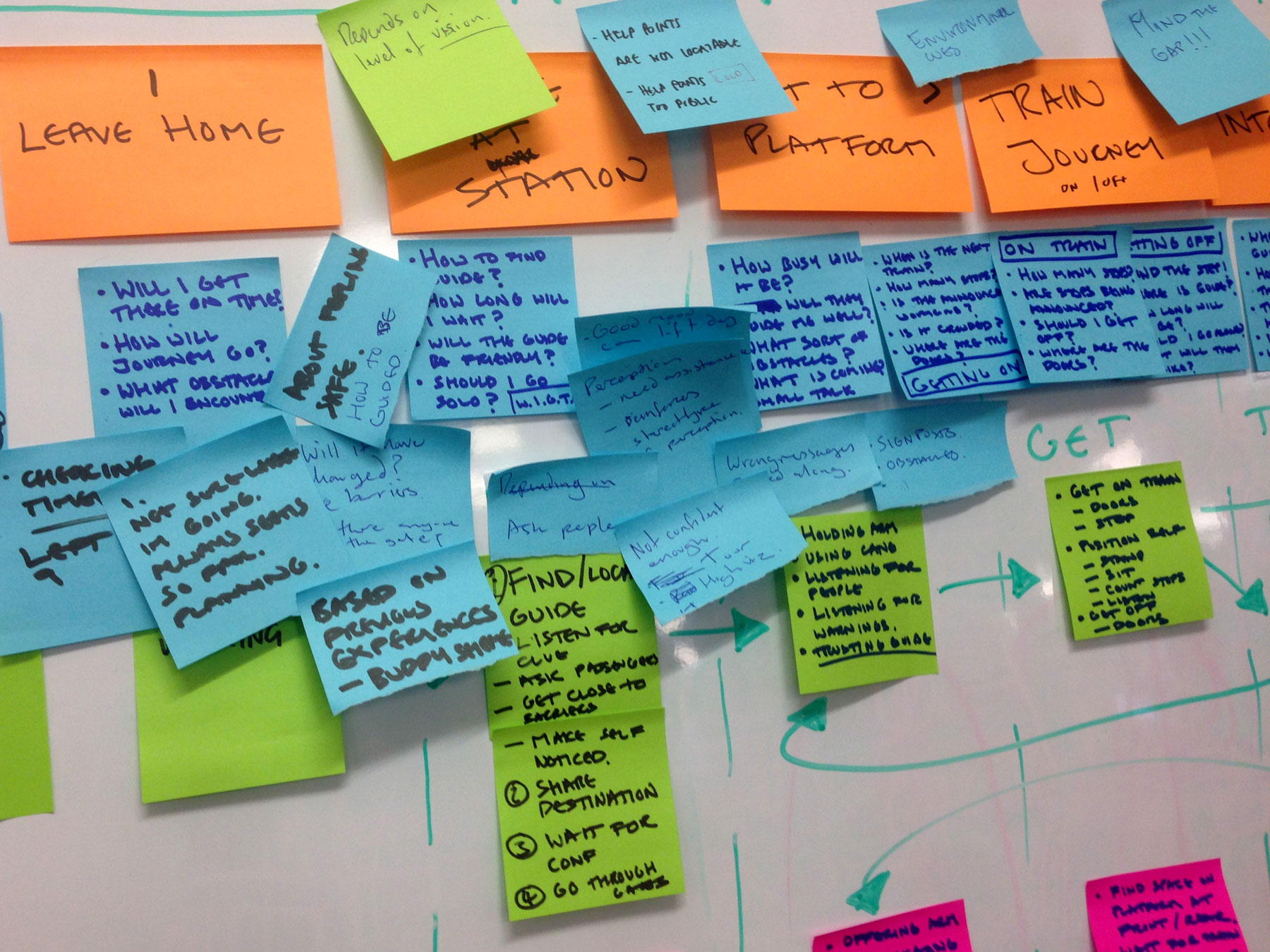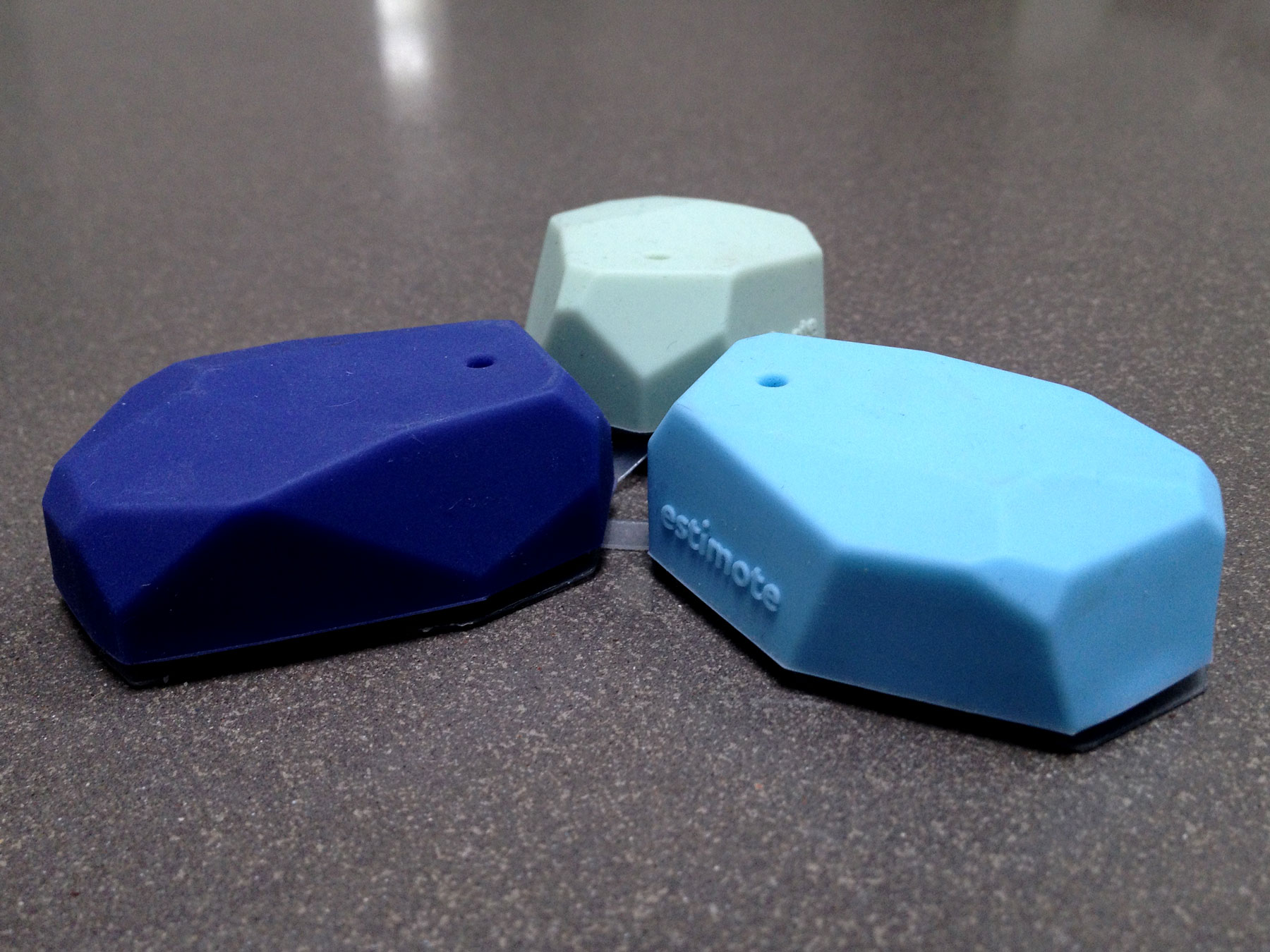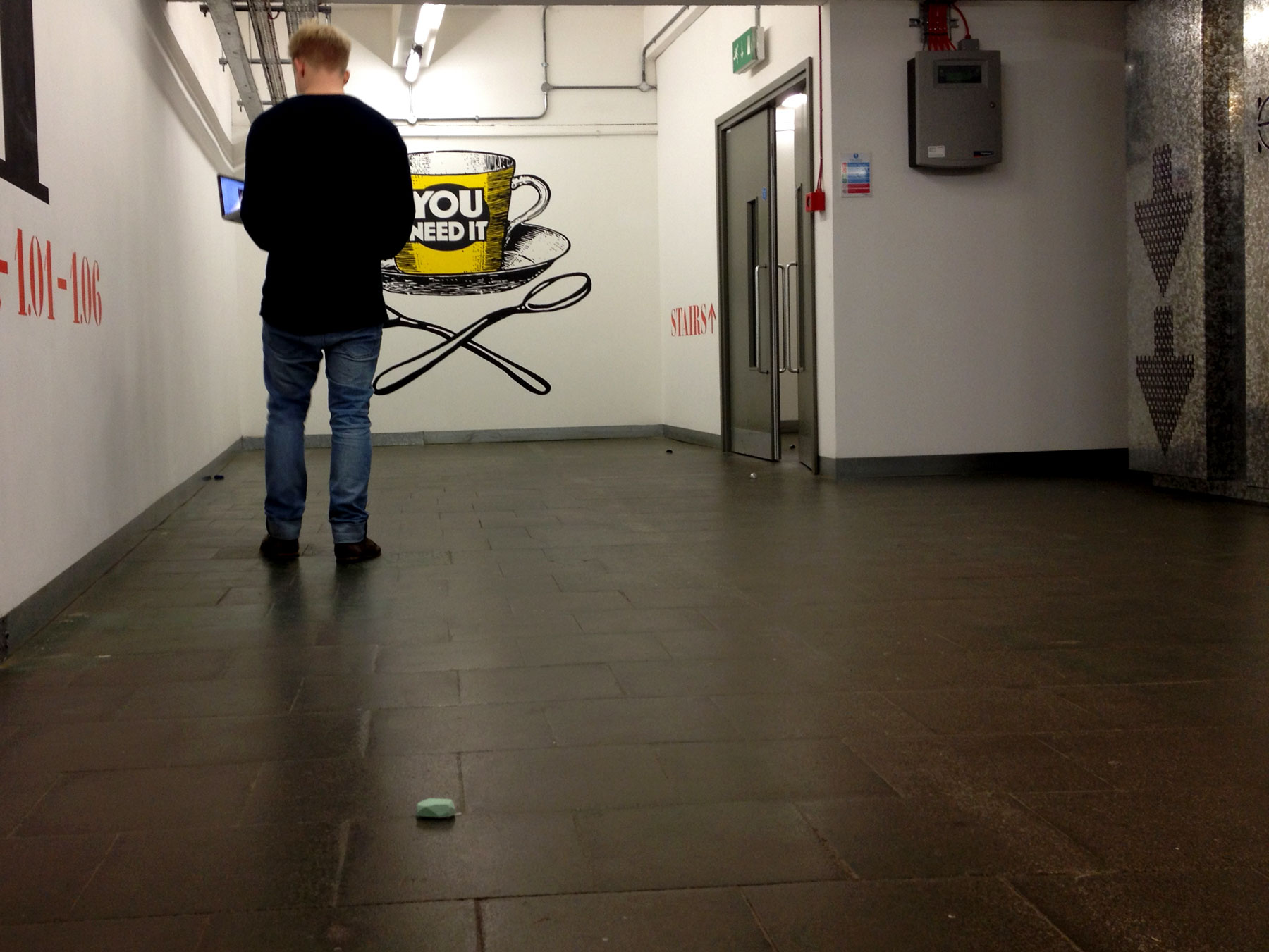Follow this link for our most recent post on Wayfindr.
We are working closely with the Youth Forum at the Royal London Society for Blind People (RLSB), exploring what it could be like for a vision impaired person using the London transport network in the near future. We wanted to share the progress and process of our investigation so far.
Embedded content: https://www.youtube.com/watch?v=nhaM2wUmSf4
Earlier this year the RLSB Youth Forum published their Youth Manifesto, identifying priority areas for vision impaired young people – and one of these sparked wayfindr’s development. Being able to travel independently anywhere at any time is a major challenge for vision impaired people. Whether it is getting to work or meeting with friends, public transport is often the only way affordable to travel, with driving out of the question and taxis a costly alternative.
In response to their manifesto, we worked with members of the RLSB Youth Forum to investigate ways to make independent travel accessible and cost-effective. The challenge we set ourselves was to use ‘off the shelf’ products, compatible with the devices they already use. We wanted to avoid getting into expensive bespoke hardware development, or speculating too much about the potential future of untested technology. We wanted to see if we could solve this challenge right now.
The future is already here — it's just not very evenly distributed
The ambition of the wayfindr project is to guide users from waypoint to waypoint underground, using smartphones and Bluetooth Low Energy (BLE) technology. Once the app is activated, the user's location is mapped on their own device, with spoken directions transmitted via bone conducting earphones.
Our Approach
We had given ourselves a month to investigate this area and, with such a tight schedule, we needed to be in the right mindset from the get go. We already knew about some of the challenges faced by the vision impaired community through secondary research – looking at papers, reports, videos and so on – but we wanted to experience something of what it’s like to be blind whilst travelling around London.

We got our hands on some sim specs, which can simulate a variety of eye conditions, and – using a cane – started wearing them around the studio. We followed this with a trip on the TfL network. On the day of the simulation, with a cameraman in tow, my guide and I set out with Joy from the RLSB Youth Forum and her guide Katherine, Campaigns Officer at RLSB. We travelled through the TfL network, moving from tube to bus, and conducted our interview whilst on the journey. During the day, we undertook a combination of simulation and observation exercises. We used a digital recorder, the H1 Portable Zoom Recorder, and the unobtrusive Autographer Life-Logging camera to capture the interview. The observation allowed us to see how the problems played out, but the simulation had the most value – allowing us to experience some of the challenges for ourselves.

Once back in the studio we mapped out our day’s journey. On the map we charted the complex route-planning and decisionmaking involved in navigating the TfL network, and got some initial ideas down.
We then arranged a workshop with the rest of the RLSB Youth Forum so that we could validate whether this scenario, with its particular challenges, was a familiar story to other blind and partially sighted people. We used the journey map to stimulate the conversation, and it also served as a conceptual framework for participants unable to see the diagram. In this way, all could participate and help make collective decisions about where to start our investigation.
Along with the journey map we took some questions to help us move from assumptions to more solid facts. With the RLSB Youth Forum, and a few props, we started to explore the journeys together and rapidly prototype and explore ideas. One of the areas that we looked at was how it might be best to feedback events to a vision impaired person. We took a Pebble watch to ascertain whether vibration might be a good tactile feedback option in addition to a pair of bone conduction headphones for audio/verbal feedback,a few other devices of varying form factors and tools to modify the form factor of the hardware. Towards the end of the workshop we started to group the ideas we’d generated into Possible, Plausible and Probable futures.
The following day we began by looking at ideas from the Plausible pile and at how we could start validating our hypotheses. We set up some experiments to help us build upon our limited knowledge through prototyping.

During our investigation we came across Estimote Beacons. These low-powered transmitters use Bluetooth Low Energy (BLE), and send small Bluetooth pulses on set intervals, almost like a pulse you can listen to wirelessly. By placing these on predetermined spots, you can use a smartphone to work out roughly where you are in a room by comparing the signal strength between the beacons. This does come with a few challenges. Bluetooth signals are radio waves, which are sensitive to interference from the built environment and the humans within it. We will be publishing our findings in a in-depth post about our investigation into beacons here in the coming weeks. All you geeks – watch this space!

Initially, we prototyped and tested the options on ourselves, using the sim specs and the cane and tweaking parameters as we went. Once we were happy, we had members of the RLSB Youth Forum help us test and refine it further. The advantage of this way of working was that we were able to adjust parameters according to the pace of the person and where and how the beacons were placed as we tested participants.
We had plenty of positive feedback from the RLSB Youth Forum. The whole process produced numerous insights into unique and difficult problems, some of which can be tackled now with existing tech. Rapid prototyping, with the close involvement of intended users, put us on a fast track to success. We didn’t get all the way, but our methodology helped to bring us close. We hope that ustwo and the RLSB Youth Forum can push this work forward, and close in on a human-centred solution for travel on the tube.
We have received incredible feedback about it and are in discussions with operators about running a trial. If you are interested in the issues and solutions outlined in this post, and would like to get involved or find out more about wayfindr please get in touch with [Katherine Payne](mailto: katherine.payne@rlsb.org.uk) at the RLSB, [Umesh Pandya](mailto: ume@ustwo.com) at ustwo or visit the RLSB.